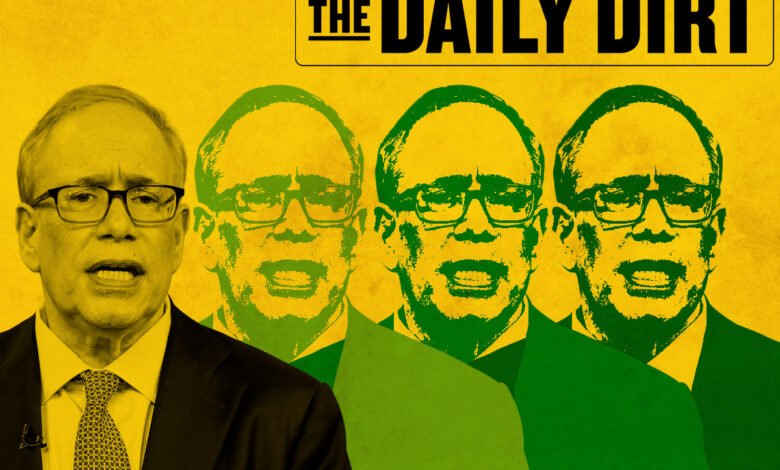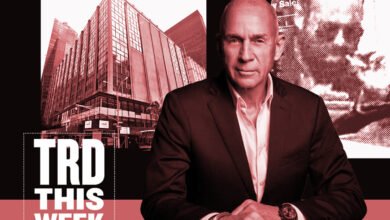TRD Asks Scott Stringer About Real Estate


One million homes? 500,000 housing units?
“Don’t believe it,” Comptroller Scott Stringer said during the first official Democratic primary debate this week. He was referring to the housing goals of some of his opponents (Sen. Zellnor Myrie says his housing plan would build or preserve one million homes in the next decade. A couple of candidates, including Brad Lander and Andrew Cuomo, have set a goal of 500,000).
Stringer advised that a shorter horizon is more realistic. His housing plan calls for building 20,000 units over five years.
The plan focuses on building affordable housing on public land (a drum he has been beating since his days as comptroller), directing those opportunities to nonprofits and launching a $500 million revolving loan fund “to support MWBE [minority- and/or women-owned business enterprise] and nonprofit developers in creating community-focused housing.”
One of his housing proposals, called Residential Options for Our Families, or ROOF, seeks to create 18,400 new family-sized units over the next four years and preserve another 24,000.
I am posing the same five questions to all mayoral contenders, as part of a question-and-answer series that will run in this newsletter. The first featured Sen. Zellnor Myrie, followed by Comptroller Brad Lander.
The five questions in this series are meant to be a vibe check, of sorts, on how candidates think about the real estate industry and its place in the political ecosystem of New York.
What do you consider your most innovative housing idea?
I think we are in dire need of building affordable housing for the vast majority of people who live in the city, or for people who will eventually come to our city. We can’t just be a city for the very rich or enclaves for the very poor. We need to build what I call “aspirational housing.” When I was comptroller, I audited the number of vacant parcels of land the city owns, and I believe that that’s the land that can build the next generation of affordable housing. When the land is free, and you link with not-for-profit developers or limited-profit developers, we have a real opportunity to build tens of thousands of affordable housing units in an accelerated timeframe.
What do you think is missing from your opponents’ plans for housing?
As someone who’s been in many campaigns, promises are made, they become more pie in the sky as time goes on. I think voters are looking for someone who has a proven track record of competence and experience, but also a vision to imagine what our city can be like again. We want to make sure that people can continue to come here and live in a city that’s affordable. We also have to make sure that we have clean parks, that we have safe streets, that we have a mayor who knows how to manage day-to-day, quality-of-life issues. We know that because of corruption and incompetence, people are feeling that it’s harder and harder to live in our city. We need a mayor who is going to right this ship and who has the experience to do it in a no-nonsense way.
How would you describe the real estate industry’s role in shaping policy in New York?
The real estate industry has always had a tremendous amount of influence; they’re a very important constituency group in our city. We can’t build housing without the industry. We need a mayor who has those long-standing relationships. We need a mayor who can bridge community and real estate. I think I’m in a unique place to do that, because I really have a record
working with all groups to get housing built in the city.
What’s your policy about accepting donations from the real estate industry, and why?
We’re participating in the campaign finance program, and those donations are limited so that no special interest groups dominate a race. We do have candidates, like Andrew Cuomo, who are taking these incredible, huge donations. So I’m not going to disarm. I’m going to take contributions, whatever people want to support me.
Why should folks in the industry vote for you?
Because we have always worked together on housing issues, and we’ve also worked together through some very difficult challenges. I was one of the architects, during the Bloomberg administration, [who] worked to expand Columbia University to give them the footprint they needed for development. I worked with Fordham University, NYU on these issues. This was not easy stuff. We had to work really hard to collaborate with communities, work with developers, work with labor unions. And I was able to shape these plans and bring it to a successful conclusion. That’s why I’ve earned the respect of the real estate industry, of neighborhood groups that believe in community-based planning. I think we need a mayor who can cut through the bureaucracy, cut through the BS, and actually get plans across the finish line.
What we’re thinking about: What changes to the Opportunity Zone program would make it more effective in NYC? And how would you define effectiveness in this context? Send a very wonky note to kathryn@therealdal.com.
A thing we’ve learned: The mayor of Hamilton, N.J., shares an office with a building that runs a mini-golf course. (The course is solid.)
Elsewhere in New York…
— Did you see this coming? Sen. Jessica Ramos, who called for a rent freeze during the mayoral debate and has criticized the former governor, told the New York Times that she is endorsing Andrew Cuomo for mayor. “With Trump threatening to bulldoze New York and take us backward, we need someone in City Hall who knows how to hold the line and deliver under pressure,” she told the Times. She plans to stay in the race, but, as the Times notes, her endorsement is essentially an admission that she cannot win.
— The New York Apartment Association’s super PAC plans to spend $2.5 million on ads and the like supporting former Gov. Andrew Cuomo’s mayoral bid, Politico New York reports. “In this two person race, Andrew Cuomo is the best candidate to increase the supply of housing. The alternative choice is unacceptable and will decimate the housing stock,” NYAA CEO Kenny Burgos said in a statement.
— E-commerce platform Queen One inked a 10-year lease for nearly 30,000 square feet at 25 Kent Avenue in Williamsburg, Crain’s reports. Empire State Development provided the firm with a $6 million tax credit through the Excelsior Jobs Program.
— U.S. Rep. Elise Stefanik has formed a PAC to “ensure Republican victories across New York,” the Times Union reports. Stefanik has been exploring a run for New York governor.
Closing Time
Residential: The top residential deal recorded Friday was $10.6 million for 313 West 20th Street. The multi-family townhome is 6,750 square feet and listed by Compass’ Vickey Barron, Pacey Barron and Larissa Petrovic.
Commercial: The top commercial deal recorded was $2.5 million for 181 Huron Street. The two-story Greenpoint mixed-use building has a two-family residence and storefront. It’s 1,800 square feet.
New to the Market: The highest price for a residential property hitting the market was $35 million for 520 West 28th Street, Unit PH37. The Chelsea condo unit is 6,900 square feet and last sold on-market for $20.2 million. Compass’ The Hudson Advisory Team has the listing.
Breaking Ground: The largest new building application filed was for a 28,689-square-foot, eight-story residential building at 1973 Crotona Avenue in the Bronx. Nikolai Katz of Nikolai Katz Architect is the applicant of record.
— Joseph Jungermann




